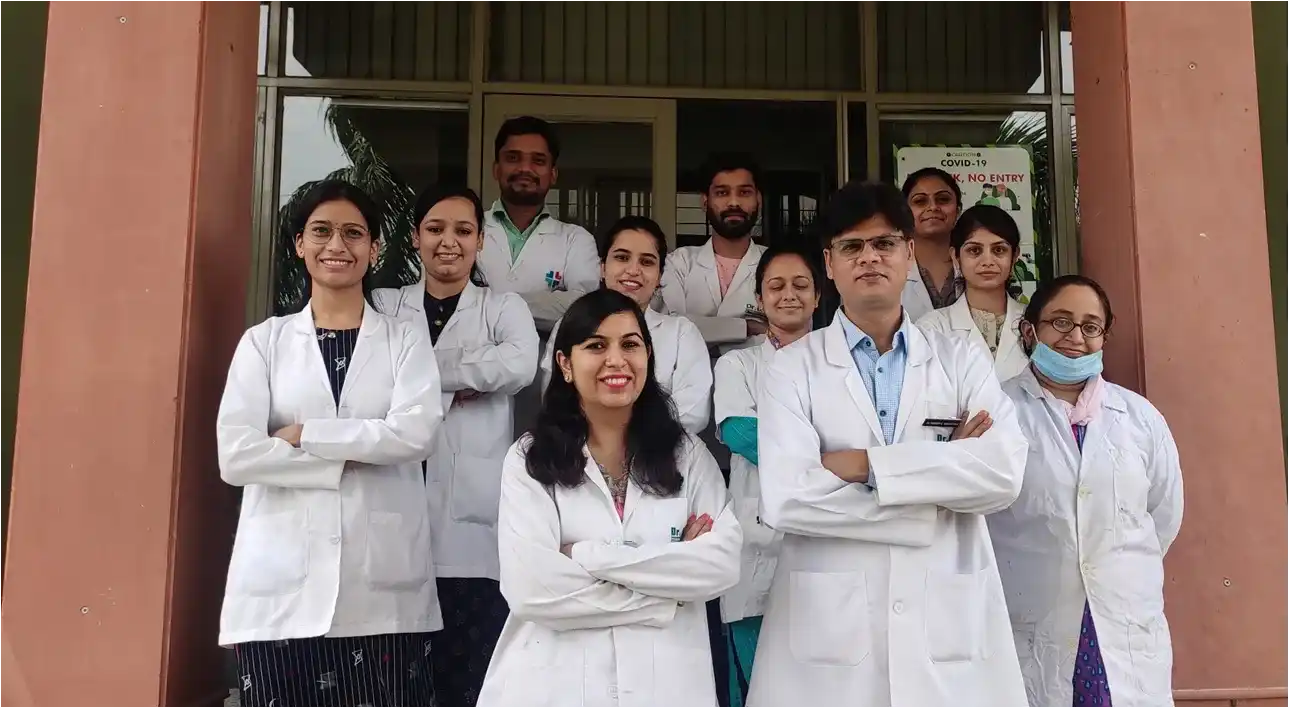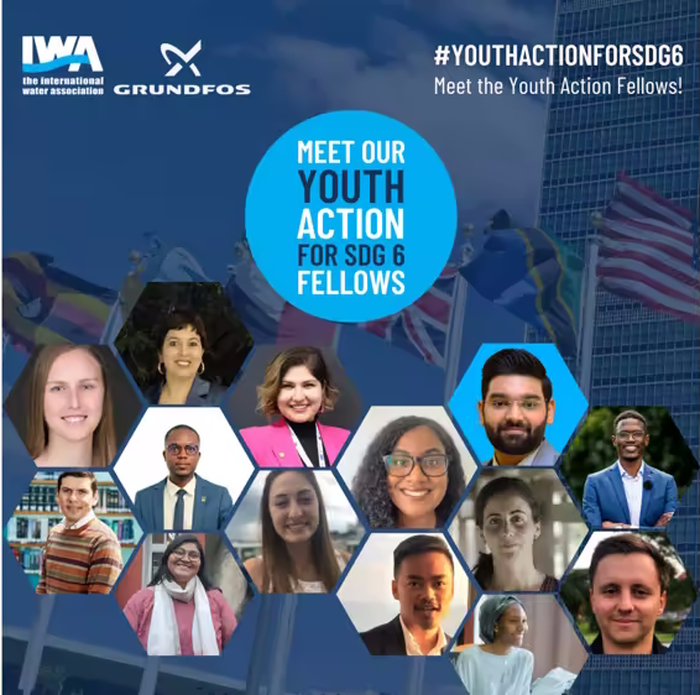
Courage Amidst Crisis: How One Step Sparked a Journey of Hope and Innovation
This is the tale of COVID-19, the most famous virus that swept the globe, and a groundbreaking tool called Wastewater-Based Epidemiology (WBE), or Sewage Surveillance, designed to detect it stealthily, long before it becomes widespread. It all began in May 2020, when I stumbled upon a few research articles and social media posts discussing how Dutch scientists had discovered traces of COVID-19 in sewage. This revelation opened my eyes to the potential of WBE as a powerful tool for detecting and monitoring virus hotspots within communities. As I delved deeper into its capabilities, I realized the immense importance of WBE in aiding resource allocation and informing public decision-making processes for controlling the pandemics.
 Reference: https://www.cdc.gov/nwss/resources.html
Reference: https://www.cdc.gov/nwss/resources.html
As an environmental research scientist, I felt a strong urge to make a meaningful contribution to society during these challenging times. As I delved into the literature on WBE, I discovered that the majority of initiatives were primarily implemented in developed nations like the UK, the USA, and Europe. Despite this disparity, I was determined to explore the potential of WBE in our country. Upon reading the protocols, I quickly realized the complexity and incompatibility of these methods with our nation's existing sewage systems. WBE remained relatively unknown in our country, and doubts emerged about the feasibility of replicating these protocols given the fragmented and underdeveloped nature of our sewage systems, particularly in Jaipur city. Moreover, the absence of sophisticated equipment such as ultrafiltration or membrane filtration, essential for WBE processes as mentioned in those research articles, posed additional complexity to my thought process in adapting the approach.
Furthermore, the country was in lockdown, amplifying fears in the society which further hindered the chances of collaboration with other universities or institutions due to restricted movement. Despite these challenges, my curiosity to initiate this project persisted. I discussed the idea with my team Ms. Jayana Rajvanshi, Ms. Jasmine Sethi and Dr. Sonika Saxena. Despite the pervasive fear and uncertainty, on May 4th, 2020, we went on sample collection from 8 Sewage Treatment Plants (STPs) in Jaipur with absolutely no idea what lies ahead. We were facing a challenge in determining the next steps for processing, all while feeling uncertain about our path forward.

Sample collection from 6 STPs and 2 Hospitals across Jaipur city, 4th May, 2020

Dr. Sudipti Arora along with Dr. Sonika Saxena at Jawahar Circle STP, Jaipur, 4th May 2020.
We came back and stored the samples in the fridge and that evening, I reached out to other colleagues, Dr. Aditi Nag, & Dr. Sandeep K. Srivastava experts in molecular biology, to join forces on this project. Thankfully, they wholeheartedly agreed, and our team expanded. The next morning, we all convened in the lab, ready to embark on the process. After putting all the permutations & combinations together, it took us almost 72 hours to process the samples and obtain the first positive result, serving as a beacon of hope for us. Two out of the eight samples yielded positive outcomes. These findings correlated with the positive cases in the surrounding area. Since there were no dashboards available for knowing the COVID-19-positive cases at that time, we resorted to recording cases from newspapers and cross-referencing them with our results. The moment of success arrived when we realized that our protocol had worked; Sewage surveillance had successfully provided us with hotspot prediction in our city.

Dr. Aditi Nag & Ms. Vikky Sinha in biosafety facility room processing the samples

Dr. Sudipti Arora, finalizing the protocols on WBE.
This achievement held significant importance as it allowed us to detect COVID-19-positive sewage samples at least 10-12 days ahead of clinical-positive cases in the area, serving as an early warning system. And so, our journey began and after 1.5 months of rigorous work, we were able to publish our first report, detailing sewage surveillance in Jaipur city https://iwaponline.com/wst/article/82/12/2823/78108/Sewage-surveillance-for-the-presence-of-SARS-CoV-2 on 18th June, 2020.
Our work garnered attention from prestigious publications such as Down to Earth magazine, and Nature among others, making headlines within a few months. Read link:https://www.nature.com/articles/d41586-021-01234-1 & https://www.nature.com/articles/nindia.2021.75.
A few days later, I received a call from Dr. Rajpal Kashyap, Director of Research and Senior Scientist at CIIMS Nagpur, expressing interest in collaborating with us on the Wastewater-Based Epidemiology (WBE) project. Within two months, we successfully secured Global Challenges Research Funds (GCRF) from the University of Nottingham. With this opportunity, our study expanded to encompass three states in India: Rajasthan, Maharashtra, and Uttarakhand. The findings of this research can be found here: https://www.thelancet.com/journals/lansea/article/PIIS2772-3682(23)00065-3/fulltext
During the alarming second wave of COVID-19, our project entailed the cold chain transportation of wastewater samples from Nagpur to Jaipur city, every week. Thousands of samples were meticulously processed, tested, analyzed, and reported. Our team worked tirelessly around the clock in the laboratory during this period. Notably, we not only detected the virus but also identified its variants through sequencing. Remarkably, we identified the Delta variant in our samples as early as March, well before its official reporting in May 2021. You can read the article here: https://www.mdpi.com/2073-4441/14/3/297

Sample transportation from Nagpur to Jaipur, February, 2021.

Pictures from our Laboratory, with boxes of samples, ready to be processed.

COVID19 Warriors Ms, Vikky, Ms. Himani, Ms. Samvidha, Ms. Devanshi, working in Laboratory.
Our collaboration further extended to the University of Wollongong, Australia for modeling studies of COVID-19. This project involved the development of the Asia-Pacific Network for Wastewater Monitoring of COVID-19 (WATMOC) model, funded by the Australian Academy of Science and the Department of Industry, Science, Energy and Resources through the Regional Collaborations Programme COVID-19 Digital Grants. The WATMOC model is based on artificial intelligence in estimating COVID-19 community prevalence through wastewater-based epidemiology. Our study has shown the benefits of using the data-driven model instead of conventional WBE back-calculation & we published many research publications that can be found here https://watmoc.com/.
A breakthrough occurred when we recognized that existing protocols from other countries or institutions were lengthy, labor-intensive, and expensive. Committed to streamlining the process, we thoroughly examined these protocols, conducted comprehensive comparisons with over 1000 samples, and developed our own. The outcome? Our new protocol reduced processing time from 18 hours, to a mere 4 hours, while also substantially cutting costs. This innovation is currently undergoing the patent process.
 Project Assistant Ms. Ekta Meena standardizing the protocol
Project Assistant Ms. Ekta Meena standardizing the protocol
Our field team, accompanied by Field Assistant Ms. Komal, at the Sewage Treatment Plant (STP) site.
But the story doesn't end there. With our confidence in WBE solidified, we felt compelled to engage the Indian government on the matter. After persistent efforts, we successfully secured project funding from the Science & Engineering Research Board (SERB) as a part of the National Wastewater Monitoring Initiative in 2022. This initiative has subsequently identified 15 institutions among Top Indian Institutions such as IITs, NITs, and CSIR, along with us, and now, we are proudly part of the INSACOG consortium, collaborating closely with the Government of India.
.jpeg)
As our journey continues, extending over 3 years and 8 months, we have expanded our goals beyond SARS-CoV-2 to encompass other concerning pathogens and antimicrobial resistance (AMR). This shift recognizes the urgency, as AMR represents a potential future threat that demands immediate and serious attention
 Photograph captured during the Celebration Event of our Success, July 2021.
Photograph captured during the Celebration Event of our Success, July 2021.
The purpose of writing this blog is threefold: firstly, to shed light on a model that transcends the medical field, focusing on prevention rather than treatment and highlighting the importance of proactive measures for long-term health and well-being. Secondly, it emphasizes how perseverance, determination, and resilience are crucial elements in achieving success. Thirdly, it underscores the transformative potential of the 3I's - Innovation, Integration, and Collaboration - in attaining remarkable outcomes. This endeavor marked a significant innovation milestone for India, made possible by the integration of numerous partners without whom this achievement would not have been possible. The successful implementation of this model is a testament to the collective efforts to translate science into societal benefit.
After publishing nearly 15 research publications, contributing to 10 book chapters, featuring in 3 news articles, and receiving 2 awards, we express our gratitude to the funding agencies, our mentors, especially Prof. A. B. Gupta, Dr. Prashanth N. Suravajhala, and Dr. A. A. Kazmi, our collaborators at CIRD, Dr. B, Lal Clinical Laboratory Pvt. Ltd., Jaipur, IIT Roorkee, MNIT Jaipur, CIIMS Nagpur, International Collaborators, Prof. Guangming Jiang, Dr. Tanya Monaghan and all my committed researchers who devoted countless hours in the laboratory, often working tirelessly for 12-hour stretches, sometimes without even a break for food or water.

Dr. Sudipti Arora, Receiving Young Scientist Award, at 7th India Water Week, Jal Jeevan Mission, GOI

Dr. Aditi Nag, received First Prize in Oral presentation at Sustainability Fair, UPES Dehradun
Special mention goes to my hardworking and passionate team, whose dedication has been instrumental in our project's success. I'd also like to express my heartfelt gratitude to our driver and field assistant, whose unwavering commitment since 2020 to collecting sewage samples across Jaipur city has been invaluable.
As I finish writing this post, I've just received news of the extension of our project for another 6 months, particularly crucial given the emergence of new variants.
A success story like ours should be shared to inspire others. If you are a young researcher, let it serve as motivation to pursue your goals relentlessly. If you are a mentor, remember the importance of guiding and nurturing your students and for others, the idea is to show you how science translates into societal impact. Please share this story widely, as everyone deserves to read it. Isn't it?
In the end, to those embarking on their journeys, I offer this simple advice: Believe in yourself and your vision, for determination knows no bounds. With absolutely no idea what to do next, and the entire country engulfed in fear and under lockdown, I simply stepped out and went for sample collection on 4th May 2020. It's moments like these when uncertainty looms largest that the first step is to be taken, and the rest of the universe will align accordingly. As I look back on the challenges overcome and the victories achieved, I am reminded that every success story begins with a single step.

Dr. Sudipti Arora, commencing a journey that began with a single step and progresses forward.
Whether you're a young researcher charting new territories, a mentor guiding the next generation, or an individual navigating life's uncertainties, remember that resilience and perseverance are your greatest allies. Embrace each obstacle as an opportunity for growth, and never underestimate the power of your dreams. With unwavering dedication and a spirit of collaboration, you have the potential to create lasting change and inspire others to do the same.


